
How to Use 9V Solar Panel: Examples, Pinouts, and Specs
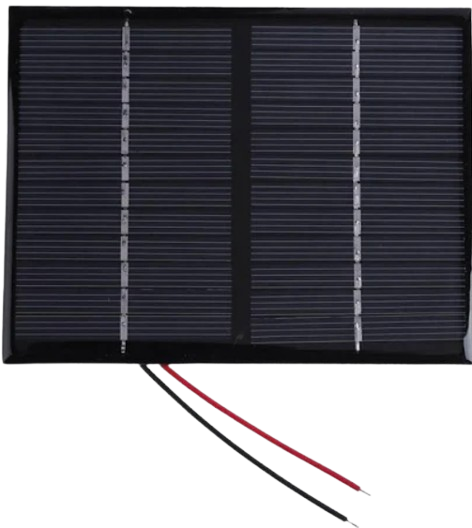
 Design with 9V Solar Panel in Cirkit Designer
Design with 9V Solar Panel in Cirkit DesignerIntroduction
The 9V Solar Panel is a device that converts sunlight into electrical energy, providing a stable 9-volt output. It is designed for use in small electronic projects, battery charging, and portable power solutions. This component is an eco-friendly alternative to traditional power sources, making it ideal for renewable energy applications.
Explore Projects Built with 9V Solar Panel
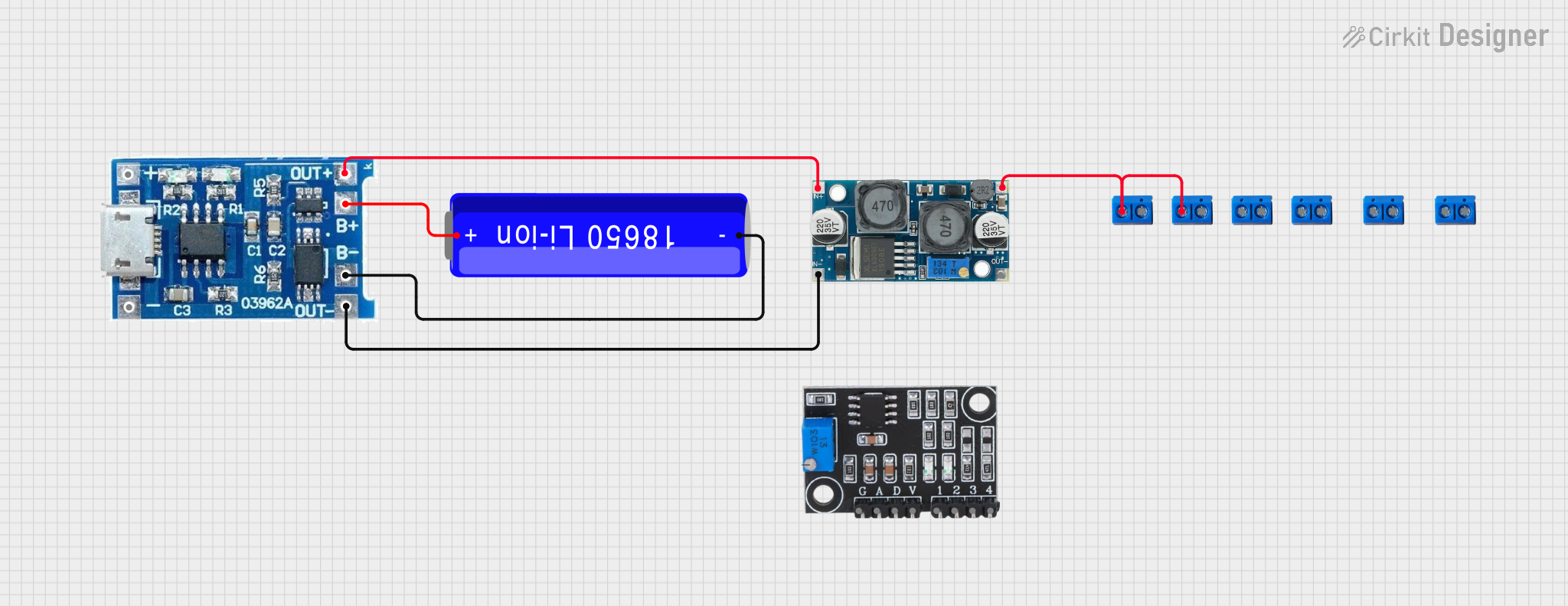
 Open Project in Cirkit Designer
Open Project in Cirkit Designer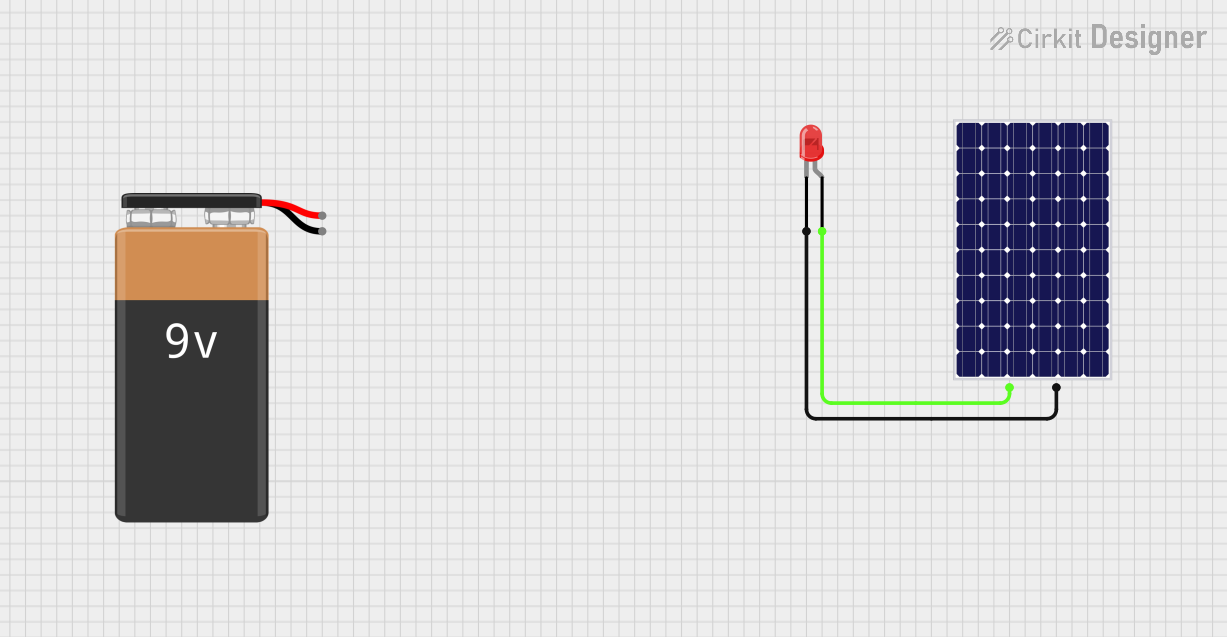
 Open Project in Cirkit Designer
Open Project in Cirkit Designer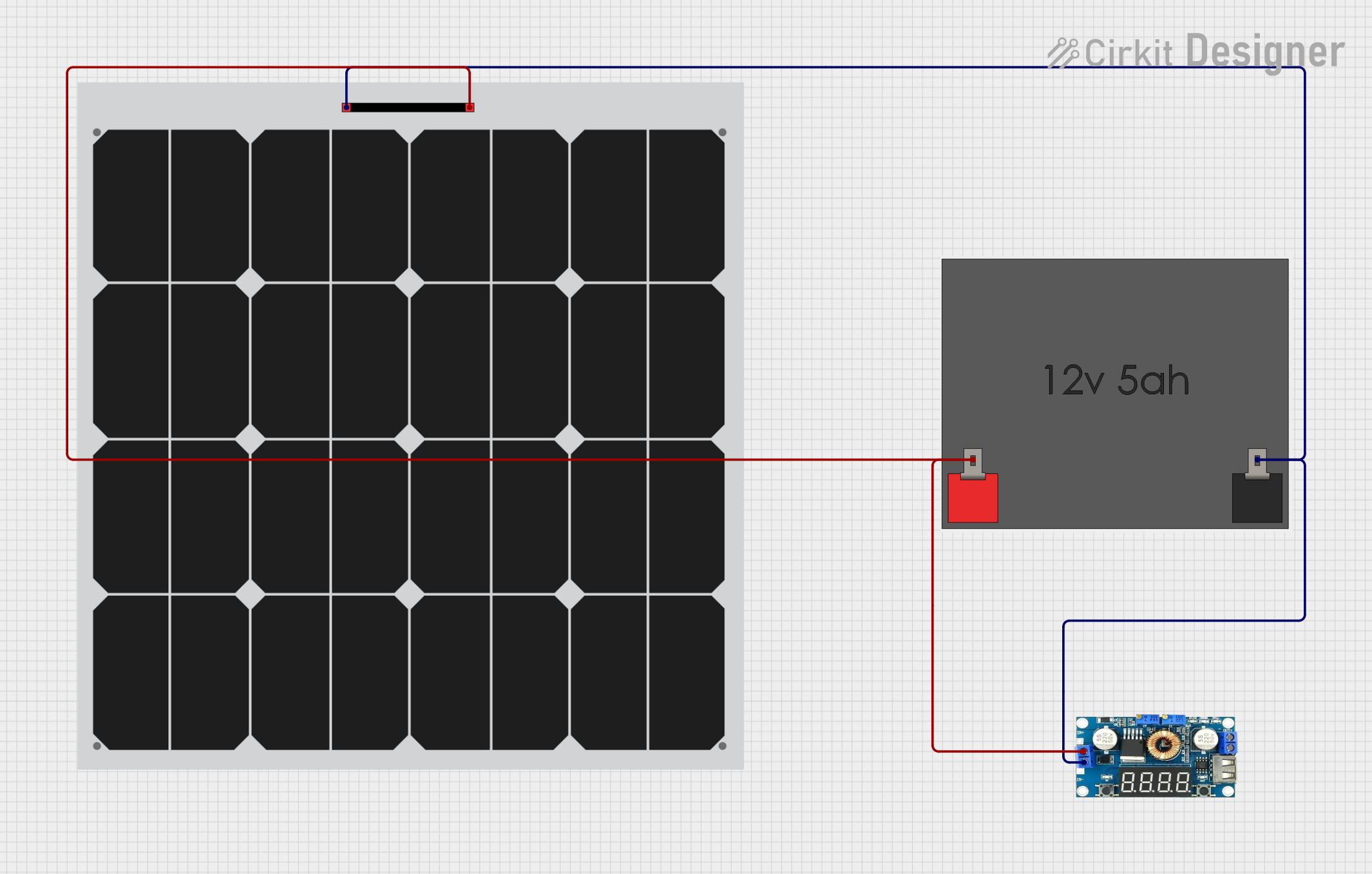
 Open Project in Cirkit Designer
Open Project in Cirkit Designer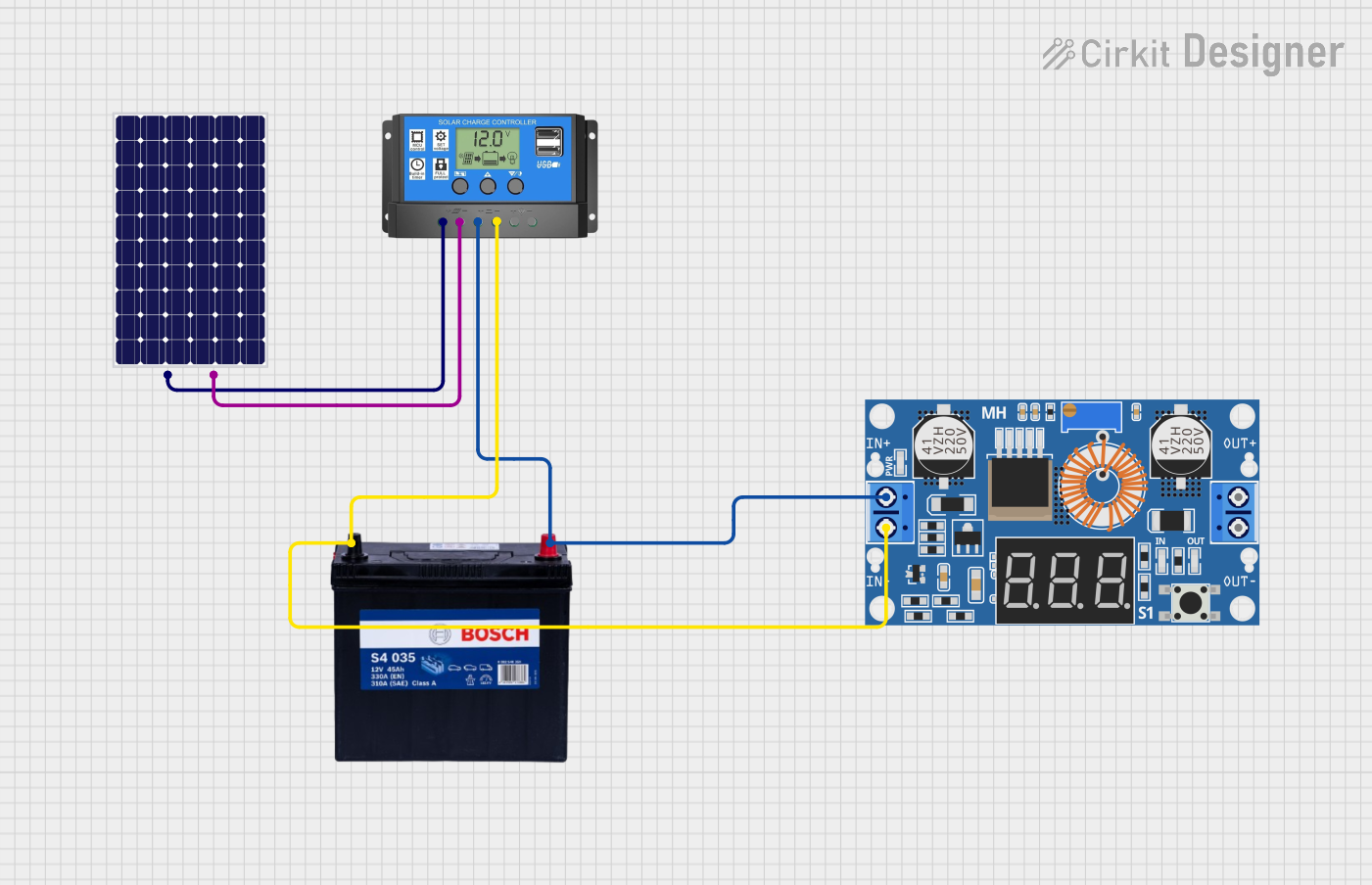
 Open Project in Cirkit Designer
Open Project in Cirkit DesignerExplore Projects Built with 9V Solar Panel

 Open Project in Cirkit Designer
Open Project in Cirkit Designer
 Open Project in Cirkit Designer
Open Project in Cirkit Designer
 Open Project in Cirkit Designer
Open Project in Cirkit Designer
 Open Project in Cirkit Designer
Open Project in Cirkit DesignerCommon Applications and Use Cases
- Powering small electronic devices such as sensors, microcontrollers, and LEDs.
- Charging rechargeable batteries (e.g., NiMH or Li-ion).
- Portable solar-powered projects.
- Educational kits for learning about renewable energy.
- Backup power for low-power devices.
Technical Specifications
The following table outlines the key technical details of the 9V Solar Panel:
| Parameter | Value |
|---|---|
| Output Voltage | 9V (nominal) |
| Output Current | 100mA to 500mA (depending on sunlight intensity) |
| Power Rating | 4.5W (typical) |
| Dimensions | 165mm x 135mm x 3mm |
| Material | Monocrystalline or Polycrystalline Silicon |
| Operating Temperature | -20°C to 60°C |
| Connector Type | Bare wire leads or DC barrel jack |
Pin Configuration and Descriptions
The 9V Solar Panel typically has two output leads:
| Pin/Lead | Description |
|---|---|
| Positive (+) | Provides the positive 9V output. |
| Negative (-) | Provides the ground connection. |
Usage Instructions
How to Use the 9V Solar Panel in a Circuit
- Positioning the Panel: Place the solar panel in direct sunlight for optimal performance. Ensure there are no obstructions (e.g., shadows or dirt) on the panel's surface.
- Connecting the Leads:
- Connect the positive (+) lead of the solar panel to the positive terminal of your circuit or battery.
- Connect the negative (-) lead to the ground or negative terminal.
- Using a Voltage Regulator (Optional): If your circuit requires a stable voltage lower than 9V, use a voltage regulator (e.g., LM7805 for 5V output).
- Adding a Diode: To prevent reverse current flow (e.g., at night), connect a Schottky diode (e.g., 1N5819) in series with the positive lead.
Important Considerations and Best Practices
- Sunlight Intensity: The output voltage and current depend on sunlight intensity. For consistent performance, use the panel in bright, direct sunlight.
- Energy Storage: Pair the solar panel with a rechargeable battery and a charge controller to store energy for use during low-light conditions.
- Overloading: Avoid connecting devices that draw more current than the panel can provide, as this may damage the panel or reduce its lifespan.
- Weather Protection: While most solar panels are weather-resistant, ensure the panel is not submerged in water or exposed to extreme conditions for prolonged periods.
Example: Connecting to an Arduino UNO
The 9V Solar Panel can be used to power an Arduino UNO via its DC barrel jack. Below is an example of how to use the panel with a rechargeable battery and a charge controller for stable power:
/* Example: Reading a sensor value powered by a 9V Solar Panel
connected to an Arduino UNO via a charge controller and battery.
Ensure the solar panel is in direct sunlight for optimal performance.
*/
const int sensorPin = A0; // Analog pin connected to the sensor
int sensorValue = 0; // Variable to store the sensor reading
void setup() {
Serial.begin(9600); // Initialize serial communication
}
void loop() {
sensorValue = analogRead(sensorPin); // Read the sensor value
Serial.print("Sensor Value: ");
Serial.println(sensorValue); // Print the value to the Serial Monitor
delay(1000); // Wait for 1 second
}
Troubleshooting and FAQs
Common Issues and Solutions
Low or No Output Voltage:
- Cause: Insufficient sunlight or dirty panel surface.
- Solution: Place the panel in direct sunlight and clean the surface with a soft, damp cloth.
Device Not Powering On:
- Cause: Incorrect wiring or insufficient current.
- Solution: Verify the connections and ensure the device's current requirements are within the panel's output range.
Reverse Current Flow:
- Cause: No diode in the circuit.
- Solution: Add a Schottky diode in series with the positive lead to prevent reverse current.
Overheating:
- Cause: Prolonged exposure to extreme heat.
- Solution: Use the panel within its operating temperature range (-20°C to 60°C).
FAQs
Q: Can I use the 9V Solar Panel indoors?
A: The panel's efficiency is significantly reduced indoors due to lower light intensity. It is best used in direct sunlight.
Q: How do I store energy from the solar panel?
A: Use a rechargeable battery and a charge controller to store energy for later use.
Q: Can I connect multiple panels together?
A: Yes, you can connect panels in series to increase voltage or in parallel to increase current. Ensure the combined output matches your circuit's requirements.
Q: Is the panel waterproof?
A: Most panels are weather-resistant but not fully waterproof. Avoid submerging the panel in water.